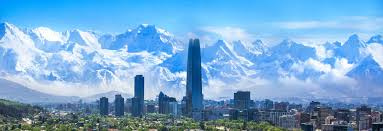Is Santiago a safe city to visit?

Is Santiago a safe city to visit?
Is Santiago a safe city to visit? Santiago, the capital of Chile, is generally considered a safe destination for tourists, though, like any large city, it has areas where visitors should exercise caution.
Santiago is a relatively safe city for tourists, with well-maintained public spaces and a low crime rate compared to other Latin American cities.
1. Safety in the City Center
The city center of Santiago, including popular neighborhoods like Providencia and Lastarria, is generally safe for visitors. However, like in any big city, it’s important to stay aware of your surroundings, especially at night.
2. Public Transport Safety
Santiago’s public transportation system, including the Metro, is efficient and generally safe for tourists. However, it’s recommended to avoid traveling during rush hour to prevent potential pickpocketing incidents.
3. Areas to Avoid
While many areas in Santiago are safe, some neighborhoods, particularly those on the outskirts, may have higher crime rates. It’s best to ask locals or check guides to know where to avoid.
4. Violent Crime and Petty Theft
Santiago is known for having a relatively low rate of violent crime compared to other cities in Latin America. However, petty theft, such as pickpocketing, is common, especially in crowded areas and tourist hotspots.
5. Police Presence and Response
Santiago benefits from a visible police presence in public areas, particularly in tourist zones and central areas. In case of emergencies, the police in Chile are generally quick to respond and are helpful to tourists.
6. Safety Tips for Tourists
To stay safe in Santiago, avoid displaying valuables like expensive jewelry, cameras, or large amounts of cash. Use hotel safes for storing your passport and money, and be cautious when using ATMs.
7. Natural Disaster Preparedness
Santiago is located in an earthquake-prone region, as Chile sits along the Pacific Ring of Fire. While earthquakes are rare, the city is well-prepared with emergency protocols and safety measures in place.
8. Medical and Health Safety
Santiago has excellent healthcare facilities, with many private and public hospitals. Health risks are minimal for tourists, but it’s recommended to have travel insurance to cover medical expenses just in case.
9. Neighborhoods to Explore Safely
While some neighborhoods may be less safe, there are plenty of areas in Santiago that are ideal for tourists. Providencia, Bellavista, and Vitacura offer vibrant cultural experiences and are generally safe to explore.
10. Personal Safety in the Evening
While many areas in Santiago are safe to visit at night, it’s important to remain cautious, especially in less busy areas. Stick to well-lit streets and avoid deserted areas after dark.
11. Scams and Tourist Traps
Like any major city, Santiago has its share of scams targeting tourists. Be cautious with street vendors offering too-good-to-be-true deals and always verify prices before agreeing to services or products.
12. Local Emergency Numbers
In case of emergencies, the local emergency number in Santiago is 133 for police and 131 for medical emergencies. It’s always a good idea to have these numbers saved on your phone for quick access.
13. Drinking Water and Food Safety
The tap water in Santiago is considered safe to drink, and the city has a wide variety of food options. However, to avoid any stomach discomfort, tourists should stick to well-established restaurants or food stalls.
14. Walking Tours and Guided Excursions
One way to ensure safety while exploring Santiago is to join organized walking tours or excursions led by reputable companies. These guides are familiar with the safest routes and local customs.
15. Overall Safety and Enjoyment
Santiago is a vibrant and exciting city that offers a lot to tourists. By staying aware, using common sense, and following safety precautions, visitors can have an enjoyable and safe experience in Chile’s capital.



Leave a Reply